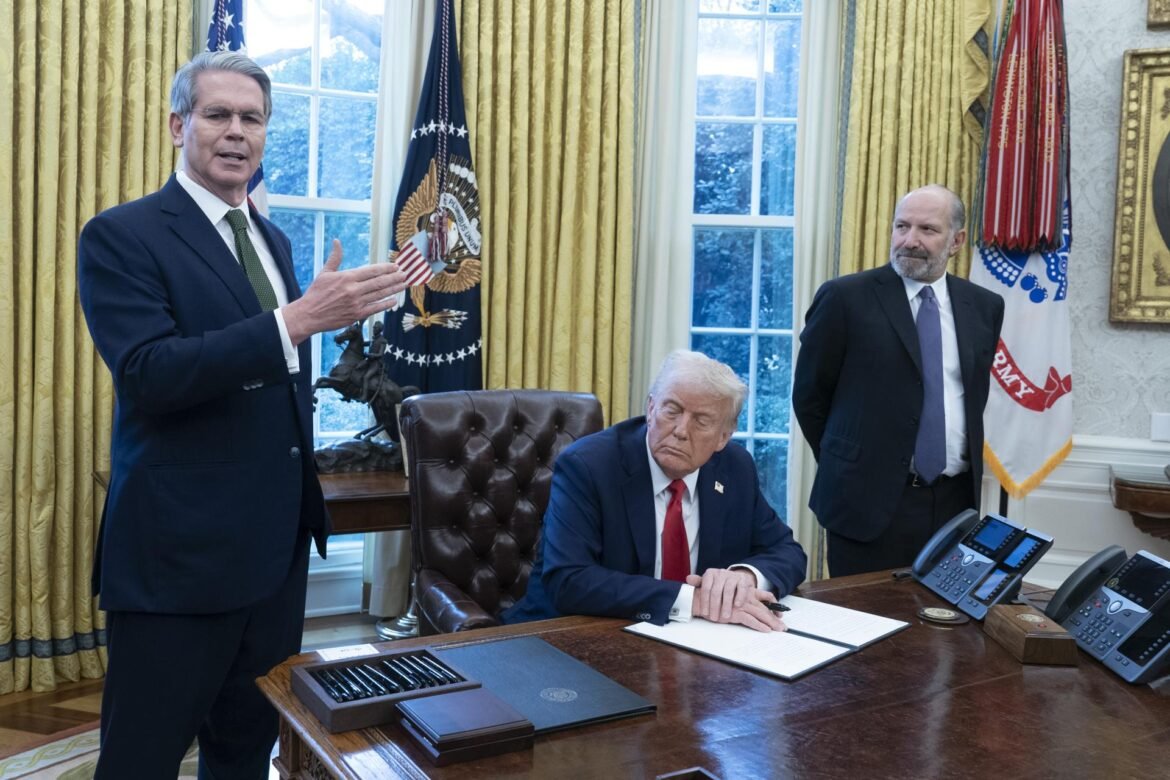The tariff policy inaugurated by Donald Trump’s government in April faces its biggest obstacle in court with the ongoing legality investigation in the Supreme Court.
Although the judges – both conservative and liberal – question the current legal basis used by the Republican administration to support the measure, there are other ways for the United States to maintain global charges, even with a possible setback in the high court.
In addition to reducing government revenue, dropping tariffs would have a catastrophic impact on the country, according to the White House. Trump even declared this week that the Supreme Court’s veto would cost trillions of dollars to the public coffers, referring to the amounts collected since the measure came into force.
HAS People’s GazetteAdriana Melo, an expert in finance and taxation, explains that the International Emergency Economic Powers Act (Ieepa) of 1977, used by the White House to justify most global tariffs, was designed for specific issues.
“The United States Supreme Court asked for more information about the use of Ieepa, as this law was designed to combat terrorism, drug trafficking, to sanction dictators, but not to tax.” According to Melo, Trump has alternative routes and is testing the legal tools available.
A specialist appointment Trade Expansion Act (Trade Expansion Act) of 1962 as a viable option and trade-related legislation of 1974. “The first rule allows tariffs under the guise of National Security, while the second addresses unfair trade practices. Both have been used in the past against China and may be evaluated now by President Trump.”
Section 232 of the Trade Expansion Act would allow Trump to impose restrictions on imports if the Secretary of Commerce believes there is a threat to the security of the United States. This measure was applied based on charges on automobiles, shares and other sectors. The 1974 Trade Act provides in Section 122 that the president could immediately impose tariffs of up to 15% for a period of 150 days in cases of unfair trade practices, although this measure has never been used by the White House.
According to Melo, these legislations are more bureaucratic and would leave the republican government more limited in its comprehensive action, maintained with Ieepa, but legally less fragile than it is with the Emergency Economic Powers Law.
Another alternative is the use of Section 301, also part of the 1974 Trade Act, recently applied in an investigation against Brazil. In his first term, Trump used the measure to impose sweeping tariffs on Chinese imports in response to a dispute over global leadership in the technology sector. The United States has also used Section 301 powers to combat what it sees as China’s unfair practices in the shipping industry.
This device does not impose limits on the amount of charges, a positive point for the government. However, to be approved, it is necessary for the commercial representative to conduct an investigation and, generally, a public hearing to determine the real need to apply Section 301.
John Veroneau, who was general counsel to the United States Trade Representative during the George W. Bush administration, told Associated Press that there are disadvantages when applying the measure against countries smaller than China. “Conducting dozens and dozens of Article 301 investigations in all these countries is a laborious” and time-consuming process.
There is also the option of Section 338, which dates back to the 1930s and has never been invoked. It allows for the imposition of retaliatory tariffs of up to 50% on countries with “unreasonable” trade practices and does not require time-consuming investigations by the Trade Representative.
Since announcing the tariff in April, the federal administration has been the target of several unfavorable decisions in lower courts. Courts have held that the Emergency Economic Powers Act cannot be used unrestrictedly by the president, as the White House has argued.
There is no clear forecast of how long the Supreme Court will take to decide the case. Until then, the global charges that generated considerable revenue for federal coffers must be maintained and the Trump administration is able, through them, to negotiate trade agreements with countries.
An eventual rejection of the legal basis used by Washington will probably not overturn the breadth of the tariff regime inaugurated by the president, but it could change the way it is applied.
Furthermore, if the Supreme Court decides to annul the use of the emergency law, the federal government may have to reimburse companies that had to pay the fees.
Treasury Department data verified by Fox Business point out that the United States collected more than US$213 billion in tariff revenues through the end of September, including monthly records of more than US$31 billion in August and more than US$31 billion in September. At the beginning of the year, revenues ranged from US$17.4 billion in April to US$29 billion in July.
Whether or not he suffers a setback, Trump is likely to remain under pressure from lower courts and political opponents seeking to overturn his policies.

